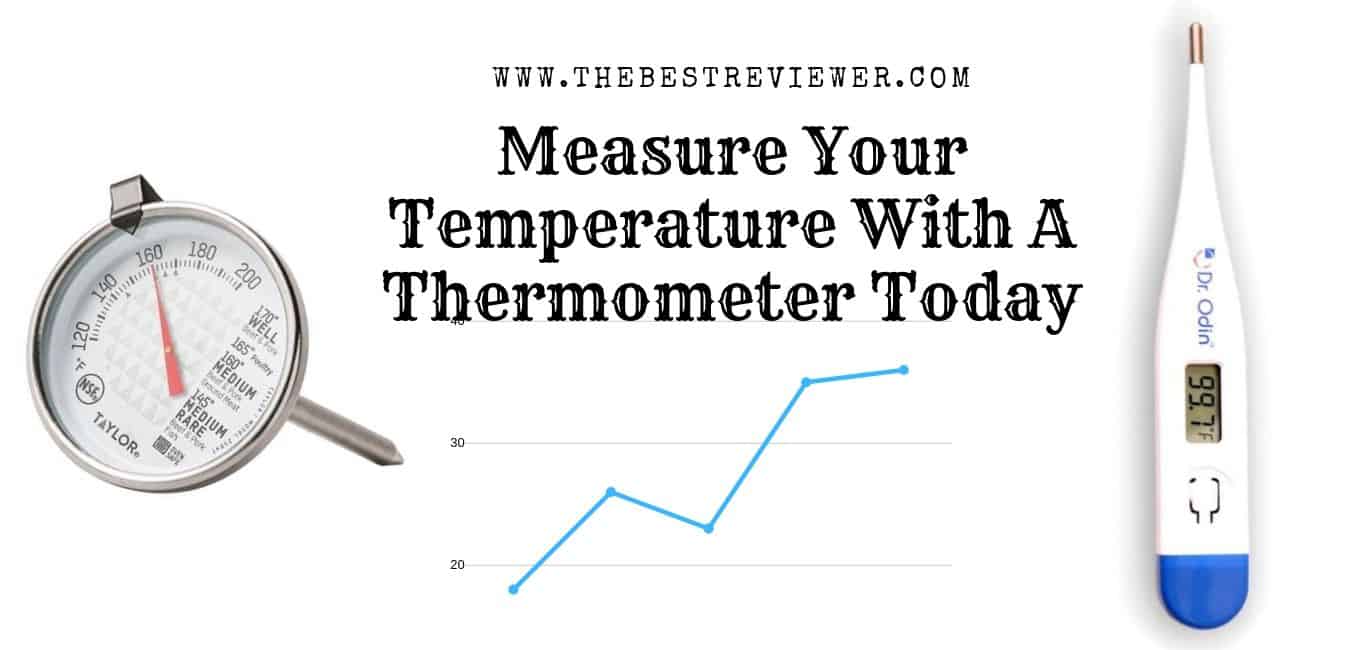Contents
Defining a thermometer
A thermometer is a temperature measuring device used on people, food, refrigerators, furnaces and others. It is used to detect the current temperature and track any changes over a period of time.
It is most useful in health care, food preparation and industrial operations. This device is actually more common and often overlooked in our daily lives. It tells you how hot or cold a room or outside is. You use it when you cook or bake.
- You may like: Infrared thermometer review and buying guide.
It’s built into your air-conditioners and furnaces so these machines can function properly. There’s one in every refrigerator to make sure the stored food or other things in there are kept at the right temperature.
Thermometers for human
There are thermometers for humans and animals to check them for fever. We often use this device when we are feeling a little under the weather or when someone else in the family is not feeling so well. There’s no special training needed to use it yourself or on someone.
The earlier types of thermometers made of glass contain mercury. The tip where this substance is concentrated should be in direct contact with the warmest part of the body. No part should be exposed to the ambient air when taking a temperature.
The most preferred parts are under the tongue and the armpits where this could be done successfully. For smaller children, sometimes this is inserted in the rectum. It will take about three minutes of exposure before an accurate measurement can be taken.
The glass thermometer should be washed with soap and water. It should be sterilized by alcohol. You can soak this in alcohol or wipe it clean with a cotton ball soaked in alcohol.
Digital Thermometer
The digital thermometers are more popular for children these days because the readings are fast. These are usually inserted in one ear and may only take a few seconds for a reading.
Since these do not have as much contact as the other thermometer, temperature readings might not be as accurate.
The technology is still being improved upon and pediatricians are mostly using digital ones for very practical reasons. Sterilizing the tip with alcohol is a must before using or reusing it.
Thermostats are either exposed to ambient air or attached to a cooling and heating device. The room thermostat can measure a wider range of temperatures than the thermometers for people.
They are stationery and are really not much good for anything else. There are ones installed in your air conditioners or furnace so the machines comply with your settings and work properly.
In the industrial setting, thermometers are used to control the quality of any product that is processed with heat or cool temperatures. They can be used to detect much higher and lower temperatures.
What Is A Digital Thermometer And How To Use One
These types are used in HVACs, window type air conditioners with digital displays, waterproof equipment, explosion proof construction, and sanitary applications. Air conditioners with digital displays often have remote controls and are easier to use than non-digital ones.
Some of the digital thermometers are explosion proof which prevents sparks, flashes or other types of ignition by containing the explosion of gases inside or around the unit. In HVACs, these thermometers are used for monitoring airways.
Waterproof thermometers are airtight and used in wet environment applications. The ones used for sanitary applications are mostly for food and pharmaceuticals. These thermometers can have more sophisticated functions such as logging data and higher data collection capabilities.
These can also record values, have timers, do self-tests or diagnostic tests, power batteries, and even do math and statistical functions.
The user interface consists of a digital front panel and a few buttons, if not one, that starts and stops a reading. The length of time required to make accurate detection depends on the specification of the manufacturer.
There are thermometers that need about a minute of exposure and there are quick detecting ones that need only a few seconds. Direct contact is not required in more sensitive digital thermometers.
These are usually used by pediatricians and other medical practitioners on children. They are inserted into the ear to check for fevers. Before use, the tip or the probe should be disinfected by alcohol or any other sterilizing solution that wouldn’t cause any irritation to the skin even if the probe does not require direct contact.
After the probe has been exposed in a sufficient amount of time, the thermometer beeps or gives off a signal that it is done. The temperature read is displayed on the screen. Since the thermometer is designed for use on humans or animals for vets, it can only read a certain range of temperatures.
If the detection is not successful, it will display an error message. The benefit of using these thermometers is that reading is more accurate as the display panel shows numbers instead of a line graph which is what could be seen on glass thermometers.
The accuracy of the detection will depend on how the reading was made. The probe may detect cooler temperatures when exposure to a surface is more distant. Some doctors would still use the thermometer orally or in the cases of smaller children, anally.
These methods require a lot more sterilizing effort from the administering physicians as the thermometers can’t be soaked in alcohol like the glass ones.
Conclusion:
The detecting tips are either soaked in the batch being processed. Nowadays, scanning technology is available however the performances of both types differ. The earlier type is still considered more accurate as it gives more consistent results.

